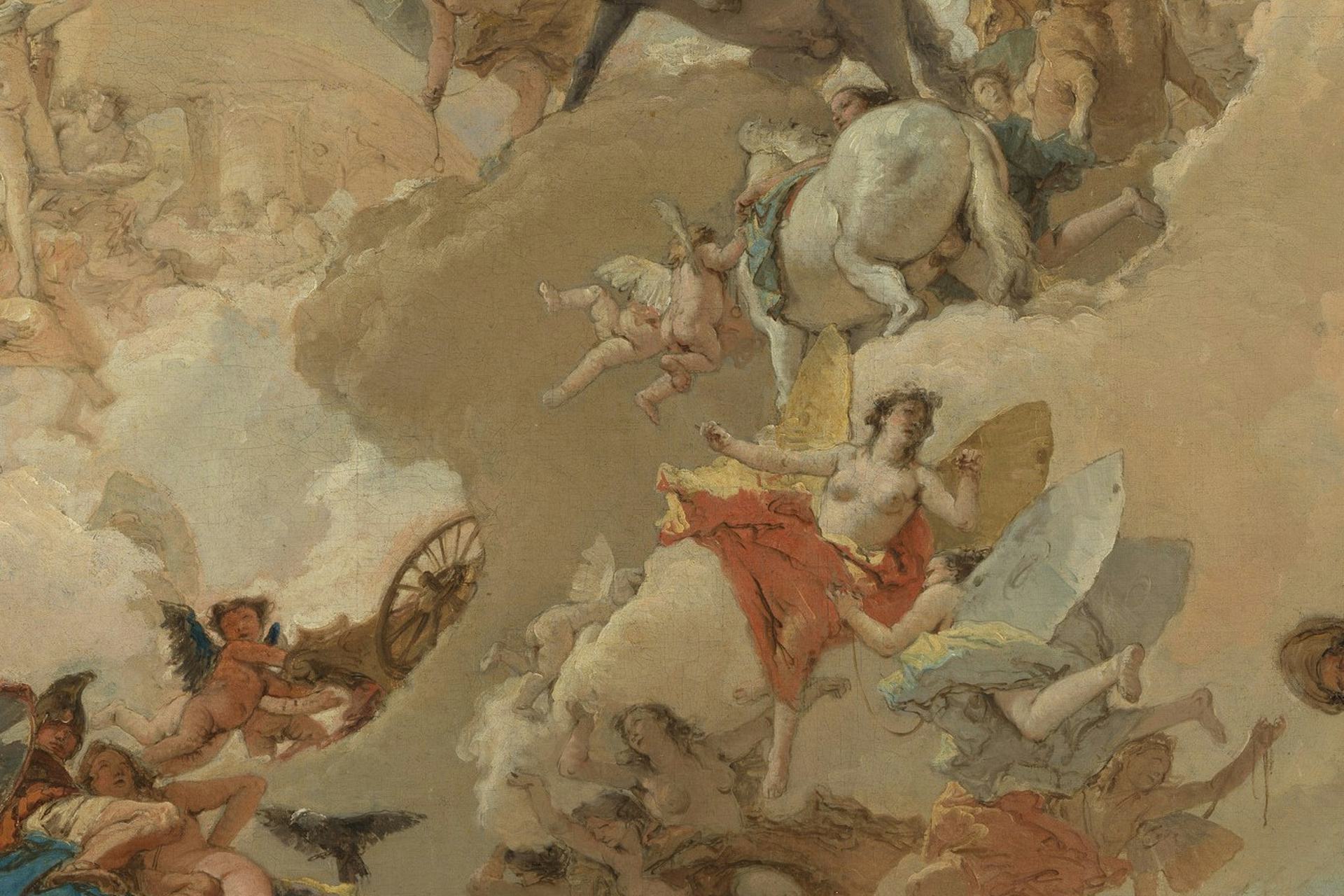Horae

Detail from Allegory of the Planets and Continents by Giovanni Battista Tiepolo (1752) showing the Horae
The Metropolitan Museum of ArtPublic DomainOverview
The Horae were Greek goddesses, daughters of Zeus, the king of the gods, and Themis, one of the original twelve Titans. They governed the seasons and the orderly progression of cyclical time. They also guarded the gates of Olympus and were connected with marriage, childbirth, and child-rearing.
The names and number of the Horae varied across ancient sources. Hesiod knew of three Horae—Dike (“Justice”), Eunomia (“Good Order”), and Eirene (“Peace”)—but other traditions named as few as two or as many as four (or more).
The Horae were chiefly thought to preside over joyful and festive events. In ancient art, they closely resembled other youthful female divinities, such as the Charites and nymphs. The Horae were worshipped in Attica as well as a few other parts of the Greek world, usually in connection with other gods.[1]